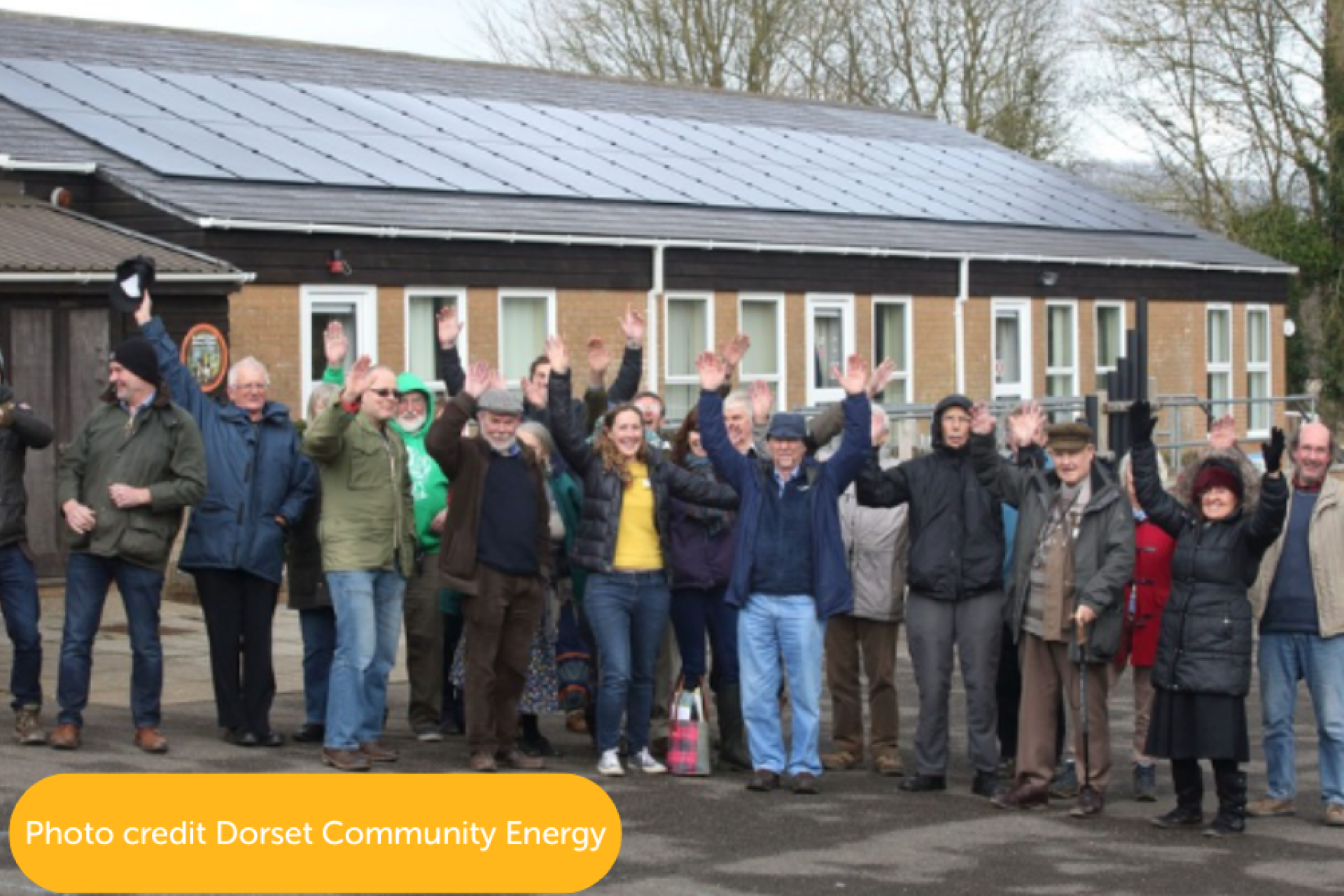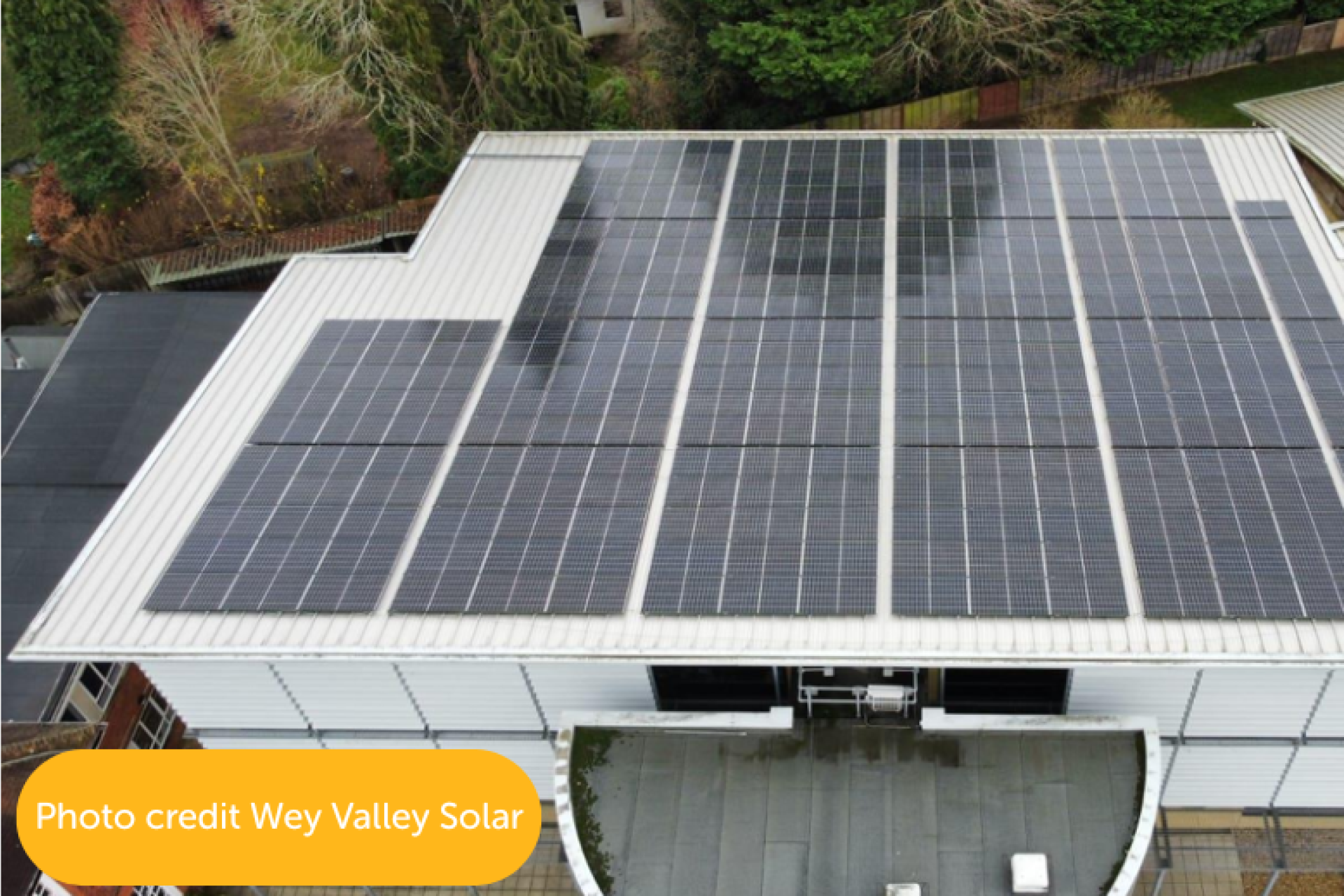Community Energy Roadmap
Our interactive Community Energy Roadmap walks you through every step of setting up a community energy group, from finding like-minded members, all the way to installing renewable assets and securing PPAs. Clear, practical, and easy to follow, it's your guide to bringing community energy ideas to life.
Exploring Renewable Energy Projects
Many community energy groups do not develop renewable energy projects and instead focus their efforts on projects such as community EV Charging schemes, fuel poverty alleviation or retrofit action. If your group is considering a renewable energy project, we have some information below to get you started.
- Map out the buildings, rivers or land in the area
-
An essential first step to getting your project off the ground is finding a site – whether it’s a roof for solar, a field for wind, or a river for hydro.
-
You can use online map software to explore your local area. If you live in London, check out their Community Energy Potential Map which highlights potential sites by borough, council etc.
-
You could add a page to your website asking the community for suggestions; you never know if someone in your network has a great ‘in’ with a local site that could help you get started.
-
If you are planning to sell any of the electricity that you generate to an onsite consumer (such as the building host), you will need to consider what type of consumer they are (high or low) and their likely usage hours when assessing if they are appropriate.
-
Depending on the technology, consider some criteria which will help you assess and prioritise suitable project sites in your area, such as large open and unshaded roofs or a building host warm and supportive of community projects for rooftop solar.
- Make contact with the site owners and introduce your group, its mission and values. Seek to win over a ‘community energy champion’ among the site who will support the project internally with decisionmakers.
- If you plan to sell the generated electricity directly to the site through a PPA, you will need to obtain a copy of the site’s electricity consumption data to assess the feasibility of this model. You may also want to find out what their current grid electricity cost is as you will likely need to make a financial proposal to the site in support of your project.
- Conduct an initial feasibility check to help you consider if the project should be pursued further and prioritise those sites you have engaged. You should assess the information you have available on the site, for example looking at roof size, orientation and shading risks on Google Satellite for a rooftop solar project. Consider the site’s appetite for the project and any risks involved. If you can, create a high-level financial model for the project using estimated project costs so that you can further assess if it is worthwhile pursuing this. A Community Energy London member shared an example financial model here that might help.
- If the project is looking promising, you should make an initial proposal to the site. This will allow them to consider what working with you involves and expectations of them. You can then assess whether there is sufficient interest and applicability for you to conduct a formal feasibility study and make a formal proposal to them.
- At this stage you may need to pay an organisation to conduct a feasibility study for you, get advice from experienced practitioners or recruit additional expertise within your group to do this. A feasibility study will typically involve site visits, getting accurate project costs, modelling both the generation and financial aspects of the project in full and exploring the permissions involved. When creating a financial model for the project, you should consider all possible project income and expenses, such as insurance, operation and maintenance costs, repayment of any loans, share interest to members, capital repayment, business rates etc. We have a course on financial modelling on our free platform, Connect, found here.
- Start a business plan, consider how this project will feed into your group’s long-term plans, factoring in things such as development costs and additional ad-hoc costs such as AGMs, sundries, director remuneration etc. After covering maintenance costs, investor returns, and contingencies, you should be able to determine available surplus. Look back at your mission and the needs of your area to map out where investment in the community would work best.
- Submit a proposal to the site. Consider including the range of social, environmental and financial benefits they may receive through working with you on this project. This could include how you plan to spend surplus in the community, what savings the site may see from their electricity costs, and how this project fits in with any publicised sustainability strategy the site has.
- Engage with the sites and begin getting legal documents in place. At this stage, it could include a Heads of Terms (HoT) to lay out how you will work together, an exclusivity agreement (so the site agrees not to work with anyone else on this project) and a Letter of Authority (LOA) so you can contact suppliers and DNOs on the site’s behalf. These will provide you with a level of confidence that the site intends to work with you.
- Tender for installers and legal services
-
Create detailed specifications for contractors, including equipment, timelines, and quality standards. Include as much information about the proposed project as you can, including the criteria against which the contractors will be judged.
-
Create an Invitation to Tender (ITT) document and send out tender documents to pre-qualified installers, legal advisors, and technical consultants.
-
Once you receive responses by the deadline you’ve set, assess the bids based on cost, experience, reliability, and sustainability credentials (or any other factors you decided!).
-
Remember to check the agreements for things such as performance guarantees, insurance, and dispute resolution mechanisms. No project ever runs completely smoothly so you want as much leeway and protection as possible!
-
Ensure community share funds are ready for use and match payment schedules in contracts.

Grid Connections
- You will be required to seek permission from the distribution network operator (DNO) to connect your proposed system to the grid. You can find the DNO for your site by using the tool found here.
- Typically, your installer will assist and often submit this application, particularly for rooftop solar projects.
- You will need a letter of authority from the site owner for this to be made on their behalf. Further information regarding what to include in this letter can often be found on your DNOs website; an example can be seen here.
- A connection offer can take up to 12 weeks, and it could require you to reduce the proposed system size, impose an export limitation, declare a cost for upgrade works, have a delayed connection date (sometimes into the 2030s) and more, so it is important to remember that grid connection for your proposed system size is not guaranteed.
- You may also need to consider when this application is made, as some grid connection offers require the system to be commissioned within 12 months from acceptance.
- Applications do not cost, but there is sometimes a cost involved in accepting an offer if a witness test or upgrade works are required.

Planning Permission
- Some projects are covered under Permitted Development Rights. This means it may not need planning permission or may only need Prior Approval from the Local Planning Authority. You can read more about permitted development rights here, and the eligibility criteria.
- If your project is not permitted development, a planning application will be required. This process can take months to years depending on the complexity of the project and the appetite of your Local Planning Authority.
- There may be a number of costs involved in obtaining planning permission, such as consultancy or surveys to assess aspects such as archaeology, transport, ecology, birds etc. You may need to obtain feasibility or development funding to cover these at-risk costs.

Other permissions
- If you are exploring a rooftop solar project, you will need the permission of the building owner (landlord consent), which may be different to who you contract the PPA with. For something like a school, this could mean permission from the council for example.
- For projects on Academy or religious schools, additional permissions will be required.
- For projects such as solar or wind farms, landowner consent will be required. This may involve paying to lease the land.
 Our work with Solar for Schools
Our work with Solar for Schools
 Power Back Community Energy
Power Back Community Energy
 The generators we work with
The generators we work with
 Get funding for your group
Get funding for your group
 Community Energy Kickstart case study
Community Energy Kickstart case study
 Powering Communities Fund case studies
Powering Communities Fund case studies
 Community energy blogs
Community energy blogs
 Community energy events
Community energy events
 What is community energy?
What is community energy?
 Our team
Our team